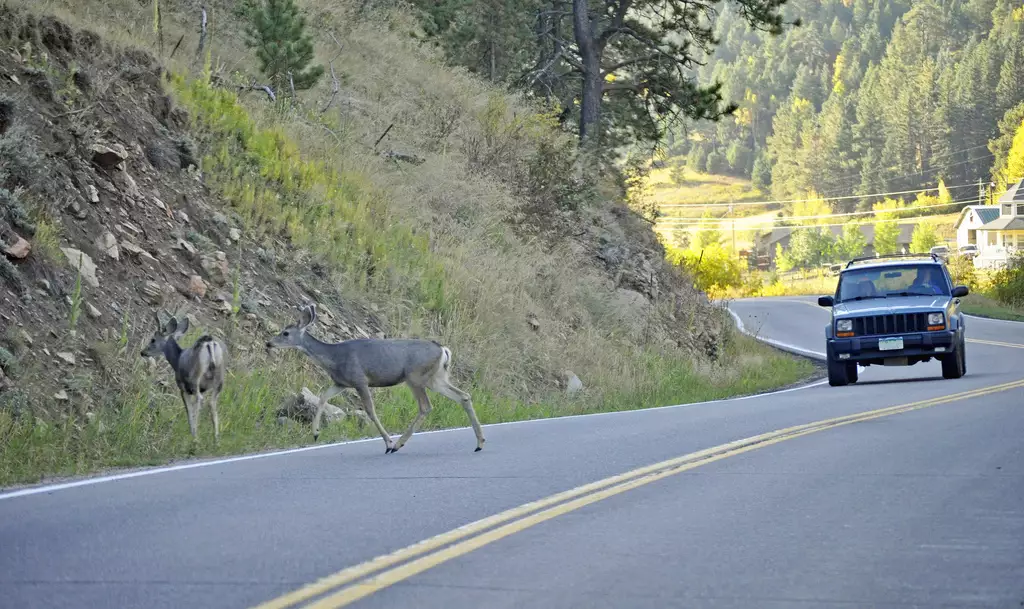Throughout the year, thousands of animal-vehicle collisions happen across the United States. Encountering wildlife while driving can be dangerous and scary. Often animals will suddenly jump onto a roadway or find themselves in busy, urban areas and in harm’s way.
Knowing what to do when you encounter a large animal on or near a roadway can save your life. Here are five tips that can reduce your risk on the road:
- Be vigilant. When driving in the mountains or countryside, a wild animal accident becomes a real possibility. As you drive, always pay attention to what’s around the corner. If you see signs indicating the presence of wildlife activity, slow down, practice caution, and expect the unexpected. Keep in mind that some animals move in groups. If you spot one, there may be more nearby.
- Reduce your speed. If you spot an animal in the road, immediately reduce your speed and, if necessary, come to a complete stop. You want to avoid, if possible, having to slam on your brakes at the very last moment. The sooner you spot the animal, the more time you will have to safely apply the brakes and avoid a wild animal accident. If it’s a large animal, such as a deer or moose, wait for it to move out of the road. If you encounter a deer, flashing your lights or honking your horn may encourage it to move.
- Avoid sharp turns. When drivers unexpectedly encounter an animal on the road, their first impulse is typically to swerve in order to avoid an animal vehicle collision. This is definitely not recommended, as a sharp turn made at the last minute can cause your car to lose control and result in a collision.
- Be extra alert during dusk and dawn. There are specific times when the probability of animal accidents with cars increases. Be on your highest alert at dusk and dawn, when animals tend to be especially active. Deer is most active during evenings and nights, when they are hardest to spot.
- Seasonal factors. To avoid a wild animal accident, be extra vigilant during peak season. Early autumn is mating season for moose and other animals, so they are on the move. A deer is most visible during fall and early winter. As spring approaches, deer and other animals in the wild begin venturing out with their families and can be spotted along mountain and country roads.

